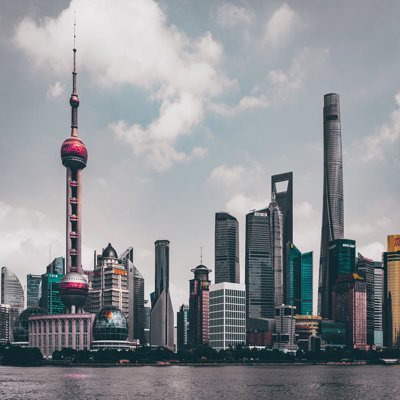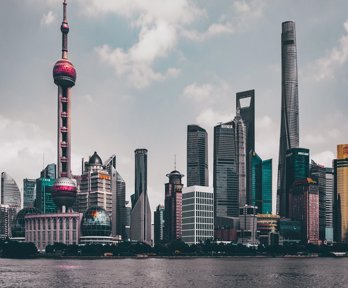The world is changing China and China is changing the world. China is in the media today, as it is almost every day, dominating the world news and analysis in a way which it has not done in living memory. It is the world's fastest growing country - by 2040 China is expected to be the largest economy in the world, with India second and place and the US in 3rd place. The country has transformed itself and its role in the world at great pace and there are few signs of a slow down in the social, economic and environmental change. Express economic development continues to give rise to huge advances in living standards for some Chinese but the benefits of new wealth are starkly uneven in a country where 250 million Chinese people still live on less than US$1 a day.
Our lives are increasingly interdependent with China as it re-emerges as a new ‘superpower'. This interconnectedness is evident in daily life from the stuff we buy in the shops to turning on the Olympics in Beijing to watch a favourite sports star. ‘Made in China' has become the moniker of low cost consumer goods such as clothing, snapped up by UK and EU consumers, and for whom the cost has fallen to about 70% in 10 years, as China's share of the global clothing market has risen from 10% to 25%.
Geographers are used to studying economic flows that feature Asian labour forces as producers of goods. However, enough wealth has trickled-down from this process to make increasing numbers of the Chinese workforce important consumers of goods too. With 1.3 billion potential customers in China no wonder western corporations from Burger King to B&Q are falling over themselves to establish a presence in cities such as Beijing and Shanghai.
Beijing and Shanghai are just two famous cities in China but Chinese cities are growing in number and scale. The rate of city growth is dramatic. At the same time, there has actually been a rise in rural poverty. Young people, especially those in the cities, are increasingly interested in sports such as basketball and football rather than the traditional Chinese games of table tennis and badminton. But for the majority of Chinese who live in rural areas life has changed little from the subsistence agriculture they have practised for hundreds of years.
No nation of China's size has ever attempted to industrialise before: can nearly one and a half billion actually be supported, as they start to become greater consumers of resources? Will China eventually be able to support its vast population at a level of comfort equivalent to Europe and North American? Will imports of food and other resources become more necessary as time passes? Who will provide these ‘imports'? Sustainable development and the impact of growth and development on the national and global environment will be key. Whatever happens, development in China will have profound implications for other nations due to the highly interdependent nature of the global economy.
This module focuses on: trade, for example increases in exports, with China already the world's third-largest trading entity; consumption, for example difficulties over the sustainability of China's resource-intensive path of development and growing numbers of affluent consumers; migration, for example a rapidly urbanising nation to have a much bigger ecological footprint; population - for example is China's changing population as a resource or a curse.

